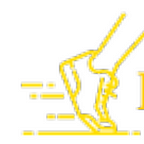Rapid Protocol is a Defi Exchange,Staking & Lending Platform
In our world today, all financial transaction goes through a centralized custodial service provider because of counter-party risk ( a risk that your asset may not be received after you might have paid in advance).
Rapid Protocol uses a Decentralized Exchange that is focused on cross-chain and non custodial transaction where asset from both parties are help in escrow with the help of smart contract and exchanged only when all requirements are met eliminating all counter party risk.
Decentralized finance, also known as DeFi, is a fast-growing sector of the cryptocurrency industry. While cryptocurrency coins create a decentralized store of value separate from any government-backed fiat currency, DeFi creates decentralized financial instruments separate from traditional centralized institutions. Although still small when compared to the global economy, DeFi has seen rapid growth in 2020. In early 2019, there was only $275M of crypto collateral locked in the DeFi economy. By February 2020, that number had grown to $1B, and it has continued to grow impressively throughout the year, hitting $2.5B in early July, $3B by mid-July, and $4B on 25 July. This growth shows that there is a significant interest in DeFi from within the crypto community, but it’s still a small enough sector that many outside the industry may not have heard of DeFi yet. So, let’s look at what DeFi is, and why it’s so exciting
DeFi: What and why? To be considered DeFi, a financial platform must have one or more decentralized functions. These often take the form of using distributed ledger technology (DLT) rather than storing records in a centralized fashion; decentralized governance of the platform in the hands of the token holders rather than a ruling board; the use of decentralized information feeds and uses algorithms to determine things such as interest rates and currency values. Most DeFi platforms take the form of decentralized apps, known 1. Introduction Whitepaper 5 as dapps. These dapps use a series of smart contracts to automate financial transactions, making them faster, more efficient, and often more affordable than their centralized counterparts. Likewise, because dapps are governed by computer code, which is inherently neutral, there is no issue of bias. Automation allows for some really interesting financial instruments not seen in the traditional, centralized financial sector. One such example is “flash loans”, a unique form of loan that must be taken out and paid back within a single transaction. These loans allow a user to borrow funds, convert or trade them across different platforms, and then pay back the amount borrowed, all in moments. Clever traders can use this to take advantage of market fluctuations and make a fast profit. Much of the interest around DeFi has to do with giving people more control over their money, and more interesting ways to use it. The centralized financial industry has long excluded people of modest means, reserving the best instruments for those with more funds, and thus further increasing the wealth gap. Many DeFi projects aim to make investment and trading more accessible, with lower minimum investments and platforms which are easy to use from any smartphone with an internet connection, regardless of your geographical location.
DAO
One of the most incredible concepts to be successfully implemented through blockchain technology is the DAO, a decentralized autonomous organization. Decentralized autonomous organizations are entities that operate through smart contracts. Its financial transactions and rules are encoded on a blockchain, effectively removing the need for a central governing authority, hence the descriptors “decentralized” and “autonomous.” The Decentralized Autonomous Organization (known as the DAO) was meant to operate as a venture capital fund for the crypto and the decentralized space. The lack of a centralized authority reduced costs and in theory provides more control and access to theinvestors. At the beginning of May 2016, a few members of the Ethereum community announced the inception of the DAO, which was also known as Genesis DAO. It was built as a smart contract on the Ethereum blockchain. The coding framework was developed as an open-source by Slock, Its team built it and was deployed under “The DAO” name by members of the Ethereum community. The DAO had a creation period during which anyone was allowed to send Ether to a unique wallet address in exchange for DAO tokens on a 1–100 scale. The creation period was an unexpected success as it managed to gather 12.7M Ether (worth around $150M at the time), making it the biggest crowdfund ever. At some point, when Ether was trading at $20, the total Ether from the DAO was worth over $250 million.
